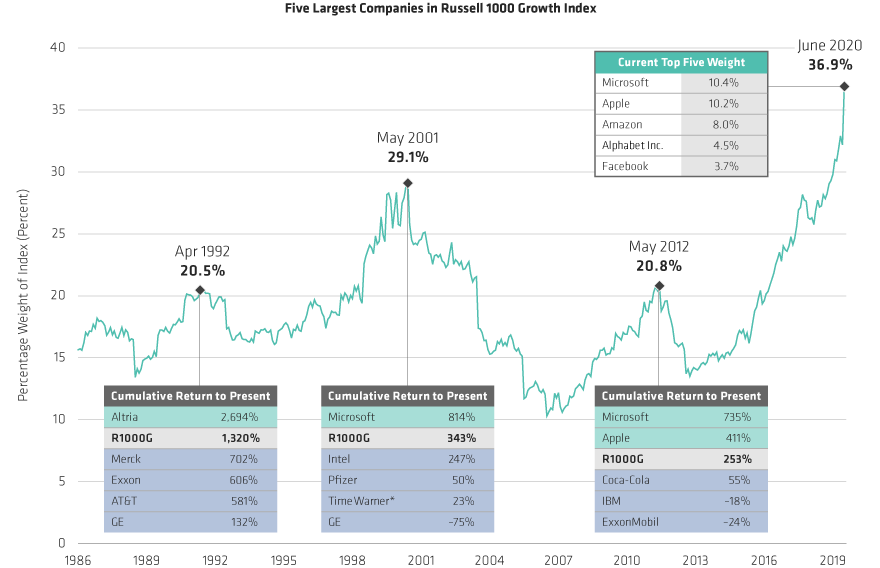-
The views expressed herein do not constitute research, investment advice or trade recommendations and do not necessarily represent the views of all AB portfolio-management teams. Views are subject to revision over time.
Record US Index Concentration Adds Hazards for Investors
06 July 2020
2 min read
US Growth: Largest Stocks and Top Performers Have Shifted Over Time

Past performance does not guarantee futur results.
As of June 30, 2020
*Cumulative returns shown for Time Warner are from June 1, 2001 to June 14, 2018, prior to AT&T merger
Peaks shown are for the last day of each month displayed.
Source: FactSet, Russell Investments and AllianceBernstein (AB)
Fund Focus
ES AllianceBernstein Concentrated US Equity Fund
Seeking Consistent Earnings Growth from High Quality US Companies to Drive Long-term Returns
Capital at Risk
About the Authors
